It’s not difficult to sew chuni with your own hands. Beginner seamstresses should know how to make patterns, what tools and materials can be used. It will also be useful to read the rules for caring for natural wool in order to wash finished products correctly.
Necessary tools for sewing chuni with your own hands
The list of tools and materials required for sewing can be seen in the table:
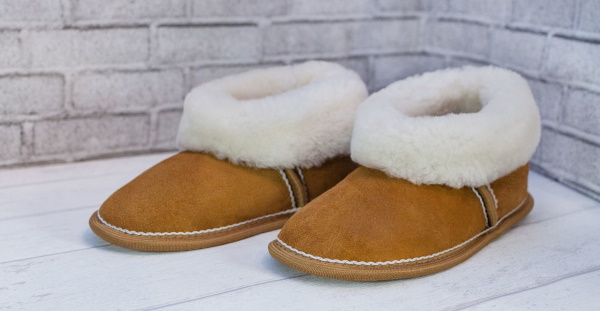
| Tool | Purpose |
| Paper and a simple pencil | You can use Whatman paper, old wallpaper or other thick paper. It is needed to build a pattern. |
| Measuring tape | Needed to take measurements. |
| A piece of white soap or chalk | Required to transfer the pattern onto the material. You can use special water-soluble markers. |
| Blade | You need to cut sheepskin or a sheepskin coat with a blade. It is difficult to do this with scissors, and besides, the edges will be uneven. |
| Large needle | Needed for sewing parts together. |
| Awl | Sheepskin or sheepskin coat are dense materials. They need to be pierced so that the needle passes through them easier. You will also need an awl to trim the details. |
| Strong threads | You can use thick synthetic, nylon or silk threads that match the color of the material. |
You can sew chuni from natural sheepskin, from a worn sheepskin coat (with natural or artificial fur), and also from an old quilted coat. Further in the article you can consider instructions on constructing a pattern and sewing chuni from different materials.
Rules for sewing chuni from fur and sheepskin
Natural sheepskin fur is a versatile material that is great for sewing warm boots for both outdoor and indoor use. Sheepskin retains heat well. In winter, your feet will not freeze even outdoors if you make slippers with a sole (you can buy it in sewing and hardware stores). Home slippers will come in handy during the off-season, when the heating in apartments has already been turned off or has not yet been turned on.
Chuni are also good shoes for babies who are just learning to take their first steps. The soles of the shoes will not slide on the floor, and the child's feet will not sweat.
Chuni are sewn by hand, without using a sewing machine. You can decorate the product with colored threads that will be used to sew the parts together. When cutting, you need to monitor the position of the pile. On all parts, it should look in one direction, preferably towards the toe. You can sew by turning the product inside out. In this case, you need to make the seams flat so that they do not cause inconvenience when wearing. After sewing, you need to properly care for the chuni.
How to wash a natural sheepskin product by hand:
- Before washing, brush off heavy dirt with a soft brush. There is no need to rub the material hard. It is enough to remove dust and stuck debris.
- Fill a basin with warm water (45 degrees).
- Dissolve wool cleaning agent in water. You cannot clean sheepskin with powder or gel for regular washing. The wool will felt and become stiff.
- Soak the chuni in a basin for 35 minutes.
- Wash the chuni like regular socks.
- Rinse off chemicals. It is better to change the water 3-4 times. The water for rinsing should be at least 40 degrees, otherwise the wool will felt from a sharp change in temperature.
- Without screwing in, gently squeeze out the chuni.
- Straighten the items and place them on a terry towel.
- Absorb excess moisture from above with another towel.
- Leave to dry at room temperature. Do not dry sheepskin on a heater or radiators. The wool will be damaged. It will become coarse and lose its shine.
How to wash in a washing machine:
- Clean the slippers with a soft brush.

- Pour wool cleaning product into the washing machine.
- Place the slippers in the drum. It is not recommended to mix items of different colors. Artificially colored wool may fade.
- Select the wool or cashmere washing mode on the control panel. If there is no such function, it is better not to risk it and wash the boots by hand in a basin.
- The water temperature in the machine should not exceed 45 degrees. The spin speed should also be adjusted. The drum should rotate no more than 600 revolutions per 1 min.
- After washing, the chuni should be straightened out and laid out on a towel to dry.

When the products are dry, you need to comb the wool with a grooming comb. If an old sheepskin coat is used for sewing, then the condition of the wool on the lining may be less than ideal.
What are the ways to restore the former beauty of fur:
- Soak a cotton pad in walnut oil and wipe the fur. This will help restore its shine and silkiness. You can also grind the nuts and put them in gauze. Rub the fur with a bag of nuts.
- 3 tbsp. soda and 2-3 drops of any essential oil will help get rid of the unpleasant smell. The ingredients need to be mixed and evenly distributed over the fur. After 24 hours, the soda needs to be knocked out of the wool.
- Glycerin mixed in equal parts with water will help restore the elasticity of the leather part of the sheepskin. Rub the smooth side of the material with the solution and leave for 12 hours.
- 1 tbsp. Vaseline, 1 egg yolk and 450 ml of warm water will help restore the softness of the coat. This mixture should be applied to the skin, not the fur.
Important: all these manipulations are carried out before washing.
Stages of sewing chuni
Chuni made by hand (patterns can be seen further in the article) are sewn in 4 stages:
- taking measurements of feet;

- drawing up a drawing;
- transferring the pattern onto the material;
- stitching of parts.
Further in the article you can read detailed instructions on all stages of sewing chuni.
Construction of the pattern
Chuni with your own hands (patterns can be drawn by hand, or downloaded pictures with drawings, and changed taking into account the size of the foot) are sewn, having previously measured the feet. You cannot make a pattern "by eye". Small or too loose shoes will be uncomfortable to wear.
How to take measurements:
- Take 2 sheets of thin cardboard or thick paper.
- Stand on them, trace the outline of your feet. This will be the basis of the pattern.
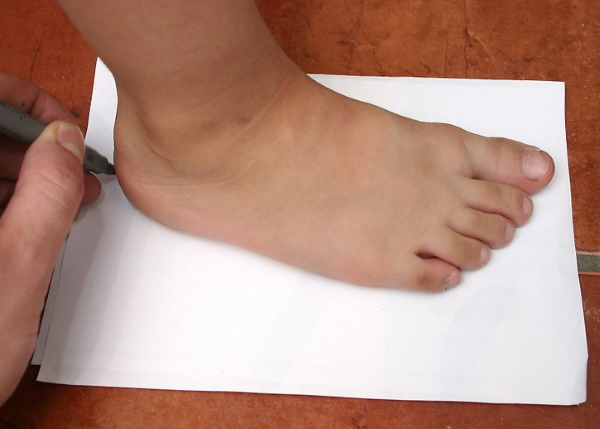
- Add 1 cm to the outline on each side.
- Take a tape measure, measure the circumference of the foot where the base of the big toe is located. Record the result.
- Measure the volume of your leg in the area of the instep (you need to find the highest part).
- Measure the circumference of the ankle.
- Measure the distance from the sole to the ankle. This will be the shaft level.
- Measure the length of the trace drawn on the paper.
- Half the length of the foot length measurement is the base of the upper part of the boot.
- The height from the sole to the ankle will need to be divided in half. Mark this distance on paper.
- Draw a line from the bottom of the base upwards. The size of this part will be equal to half the volume of the foot at the instep, as well as half the volume of the leg at the base of the big toe.
- All details need to be outlined, creating seam allowances of 1 cm.

The pattern is ready, now it needs to be transferred to the fabric.
Transferring the pattern
You can sew high-quality slippers with your own hands that will last more than 4 years. The main thing is that the patterns are made according to the sizes. Experienced seamstresses advise sewing a trial version of the boot from some other material. The finished product must be tried on. The foot should fit freely into the boot. The seams should not stick out and cause discomfort. It is also important to pay attention to how the boot looks, whether the seams are deformed, whether the product was sewn evenly.
If the sample passes the test, then you can start sewing real warm boots.
If you plan to make slippers with a fabric lining inside, the front part should be slightly wider than the inside. The size of the seam allowances will depend on the density of the fabric and wool from which the boots are sewn. For example, you can make the inside of the slipper out of fleece.
In this case, you will need to allocate 4 mm for allowances along the contour. This is not much. For sewing from quilted material, sheepskin or sheepskin, the seam allowances should be larger (from 7 mm to 1.5 cm). For 1 boot, you only need 1 sole piece and 2 upper parts.
How to transfer a pattern:
- Turn the material over with the fur facing down.
- Trace all the details. If the seam allowances were taken into account in the drawing, then you don’t need to add anything else.
- Mark the heel with small strokes. The line should follow the contours of the footprint, widening to the instep.
- Cut out the pieces from the material using a sharp blade.
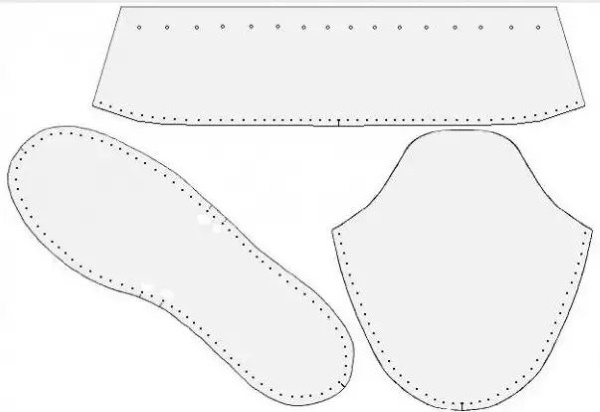
Remove any fluff and threads sticking out along the edges, if any.
Trimming of parts
Chuni made by hand (patterns cut from the material need to be processed along the edges) are sewn after preliminary edging of each element. For work you need a special awl intended for tailoring. Such a tool has a special hole where you can insert a thread.
How to turn parts:
- Step back from the edge of the part about 3-5 mm.
- Pierce the material with an awl, leading the tip from the wrong side.
- Insert the thread into the eye of the awl. Pull it out a little.
- Bring the tip of the awl outward, pulling the thread through.
- Insert the thread that was pulled through the eye and bring the awl out to the opposite side.
- Pull the thread tight and pull it out from the other side.
- Turn the workpiece over to the other side.
Repeat these steps until the piping process is complete.
Sewing together the top and lapels
How to sew the top pieces:
- Place them on top of each other with the right sides facing inward.

- Sew along the edges with small stitches.
- Turn the bottom part of the chuni inside out.
- Sew the shaft to the bottom of the boot using the inside seam.
Turn-ups are an additional part of warm footwear. They are sewn on top of the boot shaft. The seam should be made internally. The fur on the turn-ups remains on the same side as on the base of the chuni. Turn-ups can be lowered or raised as desired. When unfolded, the boots will be slightly higher. If the material for sewing is dense, it is better to use an awl to fasten the parts of the pattern.
How to Make a Durable Slipper Sole
What you will need to create the sole of house boots:
- cardboard;
- simple pencil;
- stationery knife;
- chalk or soap;
- remnants of sheepskin or sheepskin coat;
- thin foam rubber (you can use synthetic padding, which is sold in rolls);
- hard felt;
- artificial leather or raincoat fabric.

Instructions:
- Stand on the cardboard. Trace the outline of your feet with a simple pencil.
- Align all lines.
- Add 5 mm to the contours.
- Cut out the blanks.
- Place the templates on the remaining sheepskin and cut out 2 insoles.
- In the same way, cut out insoles from foam rubber, felt and artificial leather, or raincoat.
- Now you need to lay out the layers of fabric in the correct order: 1 layer - sheepskin (fur side up), 2 layer - foam rubber, 3 layer - felt. Lastly, lay out leather or raincoat fabric.
- Sew the layers of fabric along the edges using an awl.
If the shoes are going to have a rubber sole bought in a store, then there is no need to sew on the leatherette (or raincoat). The other layers should remain the same.
Joining the upper solid piece to the sole
The process of joining the fabric sole and the upper part of the boots:
- Attach the blanks to the lower parts of the boots.
- Make sure the insoles are not mixed up.
- Sew both pieces along the edges with a thick needle, using the inside seam.
- Fasten the thread, hide the knot and cut off the excess.
If the sole was purchased in a store:
- Sew the lining to the bottom of the boot.
- Inspect the sole for puncture holes. If there are none, puncture them with an awl.
- Sew the sole to the boots using a basting stitch or machine stitch.
How to decorate boots:
- with bright threads (for this you need to sew with an external seam);
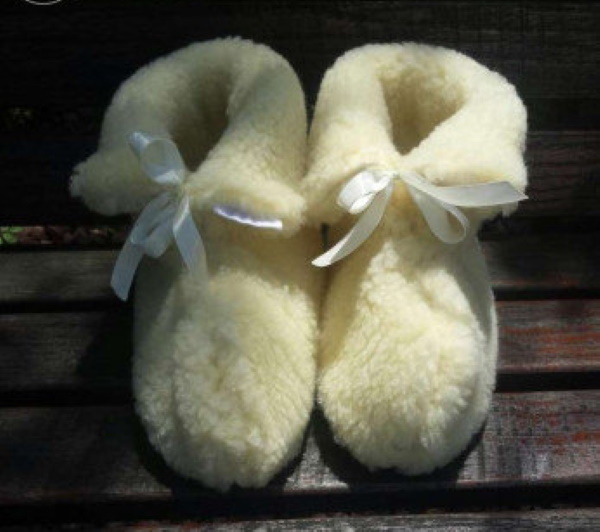
- wooden beads;
- tassels made of woolen threads;
- embroidery (option for short pile material);
- with inserts of synthetic fur, dyed in bright colours.
When the shoes are ready, the shaft needs to be turned with the fur facing the front side.
How to sew chuni from an old sheepskin coat
A sheepskin coat can be made of natural sheepskin or artificial materials. Both options are good for sewing home boots, but for outdoor boots it is better to give preference to natural sheepskin. It is more wear-resistant and warm.
Chuni with your own hands (patterns should be transferred to the smooth side of the sheepskin coat) are sewn from sleeves. Experienced craftsmen believe that the structure of the sleeve will facilitate the process of creating a pattern and sewing together some parts of the boots. In addition, there are always few different fittings and unnecessary seams on the sleeves.

How to sew chuni from a sheepskin coat:
- Carefully rip the sleeves off the sheepskin coat. To do this, take a blade. Spread the seams with your fingers and cut the threads 1 by 1. You need to act carefully so as not to damage the material.
- Then you need to measure the ankle circumference and the length of the footprint.
- Make a drawing of the pattern.
- Transfer the pattern onto the material.
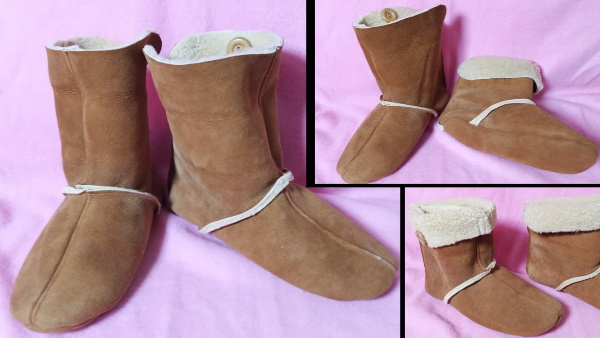
- Cut out all elements with a blade.
- Stitch the edges of each piece.
- Sew the side seams together so that the threads are inside the slipper.
- Sew the remaining elements of the boot with a seam that will stick out.
- Assemble the sole lining and sew it on. For house boots, you can use leatherette or rubberized fabric. For outdoor shoes, you need a high-quality rubber sole that will not freeze in the cold and slip. You can rip off the sole from other boots or felt boots.

By analogy, you need to sew the second boot.
Bend the shaft of the finished product and straighten the fur. You can decorate the chuni with fittings or embroidery.
How to sew chuni from an old quilted coat
You can only make home slippers from a quilted jacket or coat. Such footwear will wear out quickly outside. In addition, it will not retain heat as well as natural sheepskin.
What else you will need for sewing:
- scissors;
- fleece;
- hard felt;
- foam rubber;
- artificial leather or rubberized fabric;
- needle and strong thread.
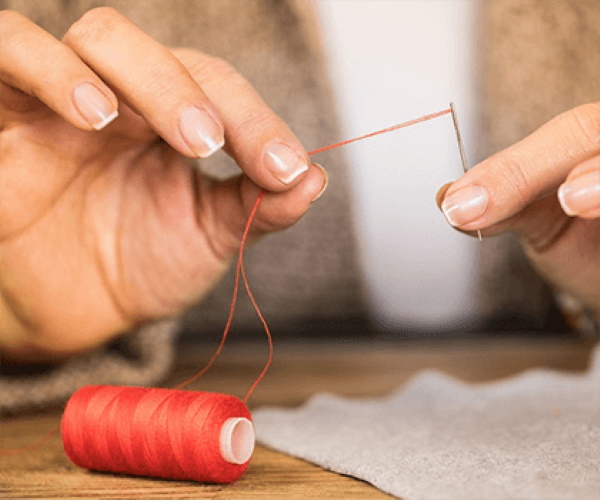
Procedure:
- On paper, make a drawing corresponding to the dimensions of the legs.
- Transfer the patterns onto fleece.
- Cut out the boot pieces.
- Sew a fleece lining. The seams should be flat.
- Turn the coat inside out. You can use the sleeves or the back piece for sewing. The desired part should be carefully ripped off with a blade.
- Transfer the patterns to the wrong side and cut out the pieces.
- Sew all the parts of the boots from the coat. The seams should be inside. If the material is not very thick, you can use a sewing machine.
- Turn the fleece linings inside out.
- Turn the pieces sewn from the coat right side out.
- Sew the tops of the fleece pieces and the tops of the slippers together using a blind stitch.
- Tuck the linings inside the boots.
- Cut out insoles from foam rubber, felt and leatherette.
- Put the felt in 1 layer, the next layer will be foam rubber. Apply the artificial leather to the bottom.
- Sew the sole along the edges with an overlock stitch.
- Sew the sole to the boots.
The boot shaft can be sewn separately from fabric with fur, and then sewn over the boots so that the fur remains inside when straightened. You can also make lapels from fleece. Before this, the patterns will need to be overcast. Sew lapels from any material using an inside seam.
If the coat or jacket was not quilted, then you can make the slippers yourself. To do this, you will need to cut out each element twice. Between the layers of fabric, you will need to make a lining of padding polyester or wool. Fasten the parts with pins and sew on a sewing machine, setting the average stitch size. You need to make several parallel lines, and then sew the material on the other side, making perpendicular lines.
You can sew chuni with your own hands from an old sheepskin coat, coat or jacket. Step-by-step descriptions will help novice seamstresses understand how to correctly construct patterns and in what order to sew the parts of the boots.
Video on how to sew chuni with your own hands
How to make slippers from an old sheepskin coat:
